-
When you click on links to various merchants on this site and make a purchase, this can result in this site earning a commission. Affiliate programs and affiliations include, but are not limited to, the eBay Partner Network.
-
Posts
719 -
Joined
-
Last visited
-
Days Won
7
Content Type
Profiles
Forums
NGC Journals
Gallery
Events
Store
Downloads
Posts posted by Yarm
-
-
1805 Christchurch medal, by T. Webb, 42mm.
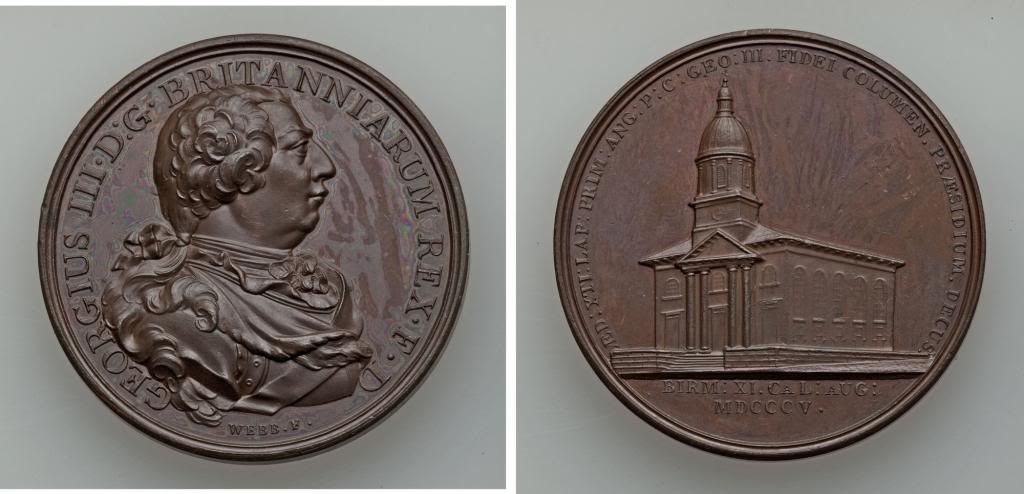
-
One of my "free" submissions this year. NGC 66BN. ex Cosmicdebris, with Peeping Tom in the window on the reverse.

-
Worcester 44, silvered. It arrived loose in a paper envelope without liner
so some high point rub was a foregone conclusion.

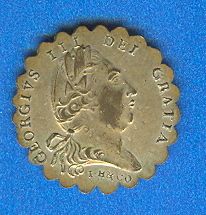
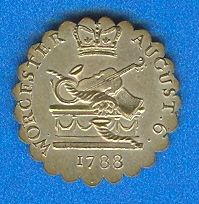
-
Cool, HiHo!
That zebra design got me wondering how many different Pidcock halfpenny designs there are (looks like 23)
and how frequently each tends to appear. Having time on my hands, I came up with the following counts
using Dr. Sriro's CD census from last year. It shows how often each design appeared in his Pidcock census of 563 tokens.
Design Total # # Tokens (by D&H #) on which design appears
Louis Rex 12 1
Crane 22 3
Rhino left 23 4
Royal arms 26 1
Zebra 28 5
Kangaroo 31 6
Lion holding dog 32 4
Eagle/radiation 35 5
Lion "exhib" 35 4
Rhino right 35 7
Dog atop lion 37 5
Tiger 41 7
Nylghau 43 4
Wanderow 43 5
Cockatoo 46 5
Toucan 50 2
2-headed cow *'s 52 6
Eagle on rocks 58 2
Lion "exib" 58 1
Antelope 60 7
Ostrich 94 5
2-headed cow +'s 126 9
Elephant 139 16
In theory one would need to obtain just 12 different Pidcock tokens to get every design, but that's only if every design had been combined with all the others. A little experimentation suggests that any of several sets of 13 tokens would do the trick.
-
Here's the other half of the pair. I hope I don't turn out to be the guy with the dunce cap!
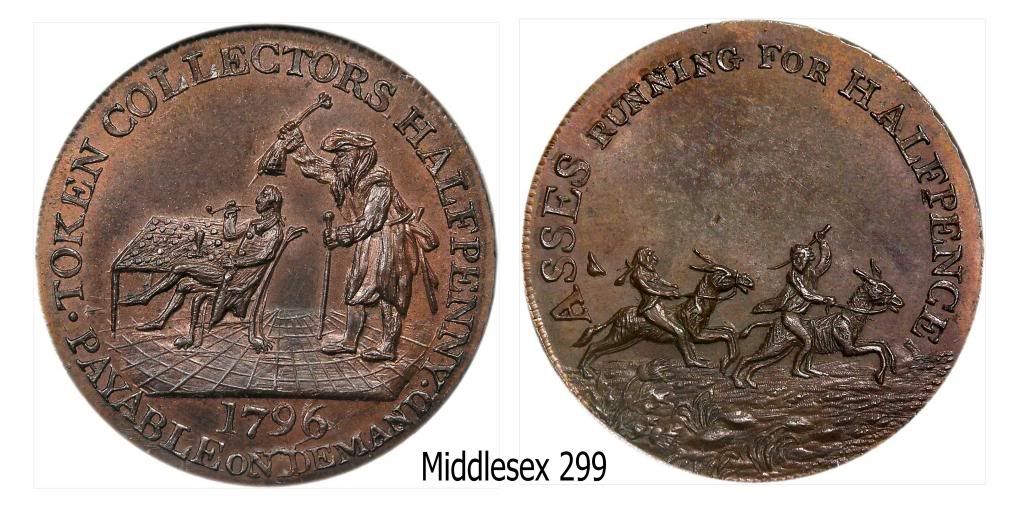
-
Denton's satirical token Middlesex 298. The edge reads "Any sum given for scarce original impressions."
I don't know whether the reverse has evidence of die rust or if someone has fooled with it.
It wouldn't shock me to get a "details" grade but there are other examples of this token which show
some funky features on the reverse as well.

-
I came across a group of US tokens for umbrella dealers and thought of this one (of several) within the Conder series.

-
That's a beautiful strike on that grasshopper!
Bob
-
Another Pidcock, this one on a thin flan.

-
"The Bad"
Yikes! Is the list of modern fakes that extensive?

-
I'm not big on farthings but this one caught my eye!

-
HiHo, neat ones! I'm curious about the collector number on your Tiger token. Is it just ink or enamel or something else?
I came across a high grade NGC Midd 246 (Allen's) which appeared to have lots of scratches in the obverse field. So I took a closer look at my own piece. Here's the obverse photographed head-on and with axial lighting.
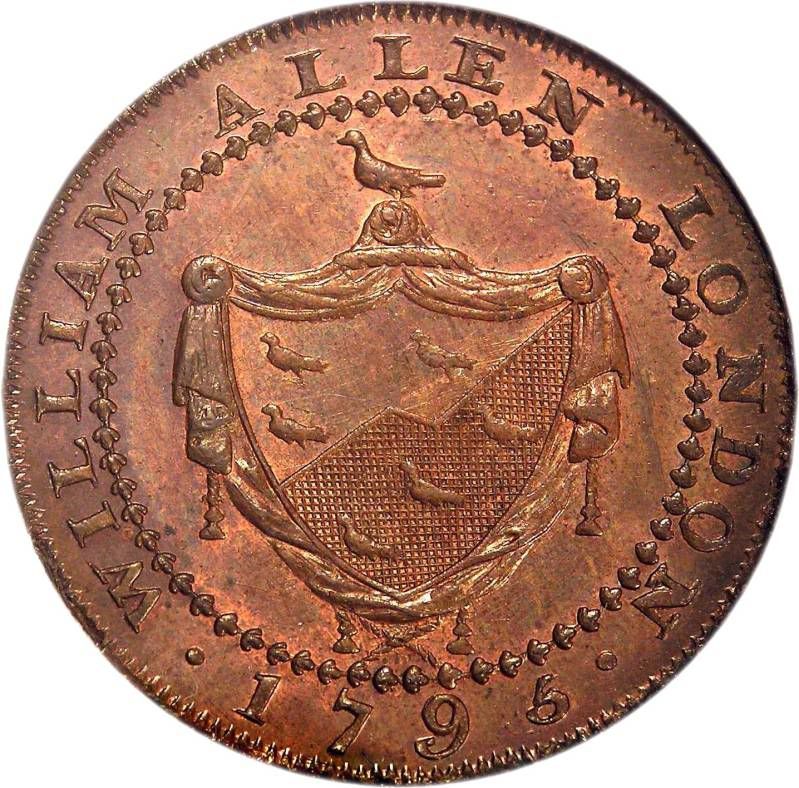
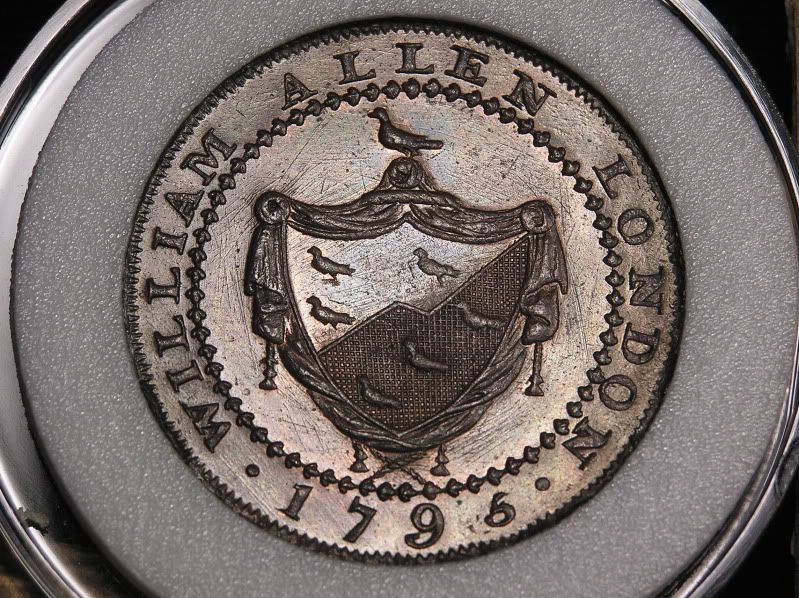
-
I had to have a Midd 415 once I saw a couple posted on the boards!

-
A bit of an oddball among the Kempson pennies with its own obverse and reverse..

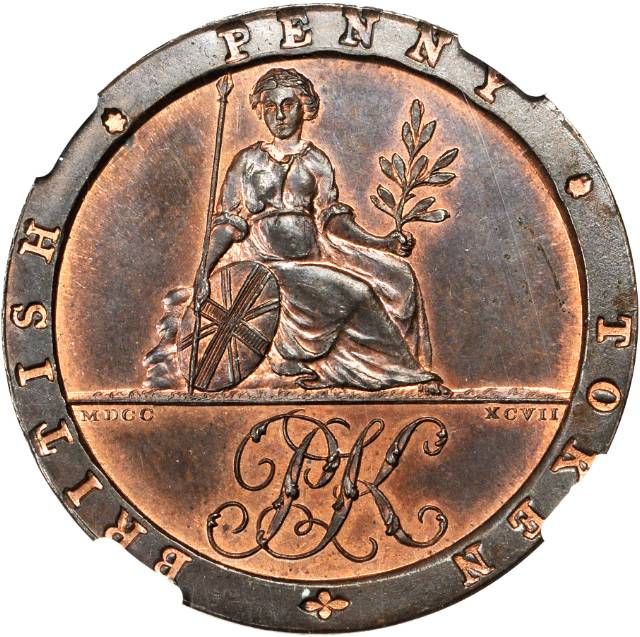
-
This one's from today's DNW medal sale. Prior Park, Bath in silver (51mm) by T. Halliday c.1835.
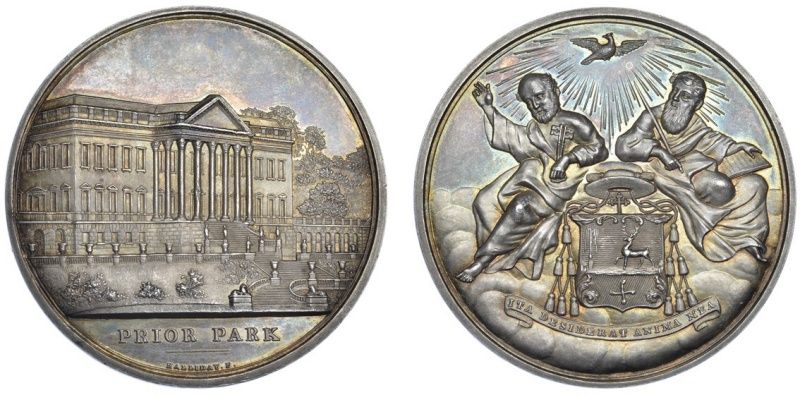
-
Nice to find a well struck Prince of Wales' crest given its high relief.
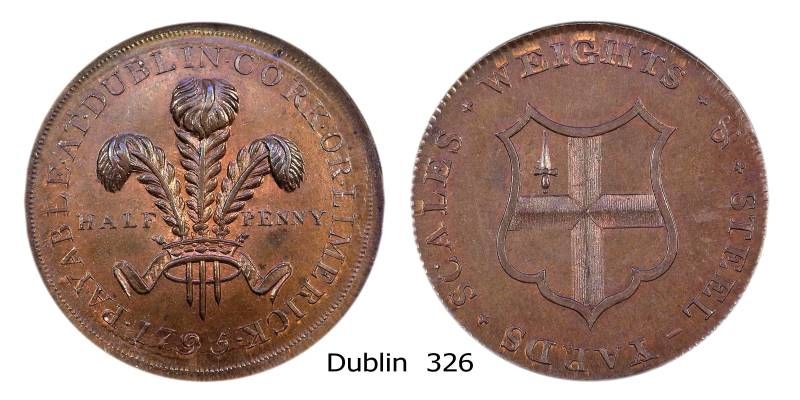
-
B. Pistrucci designed the official medal for Victoria's 1838 coronation but also produced a larger version with a similar image of Victoria. This is BHM #1802, 86mm in copper.

-
Another shortage of small change in Britain gave rise to a surge in commercial tokens beginning in 1811.
Unlike the Conder tokens which were produced in a bewildering variety of interesting designs,
the tokens of 1811-1819 (I call them "Withers tokens" after the most popular reference)
were produced for use in commerce and typically had simple logos or industrial themes.
Uncirculated examples of most of these tokens are much harder to find than uncirculated Conders.
Here's one from today's Heritage sale, Withers 1200, Weybridge Mills by Bunn & Co.


-
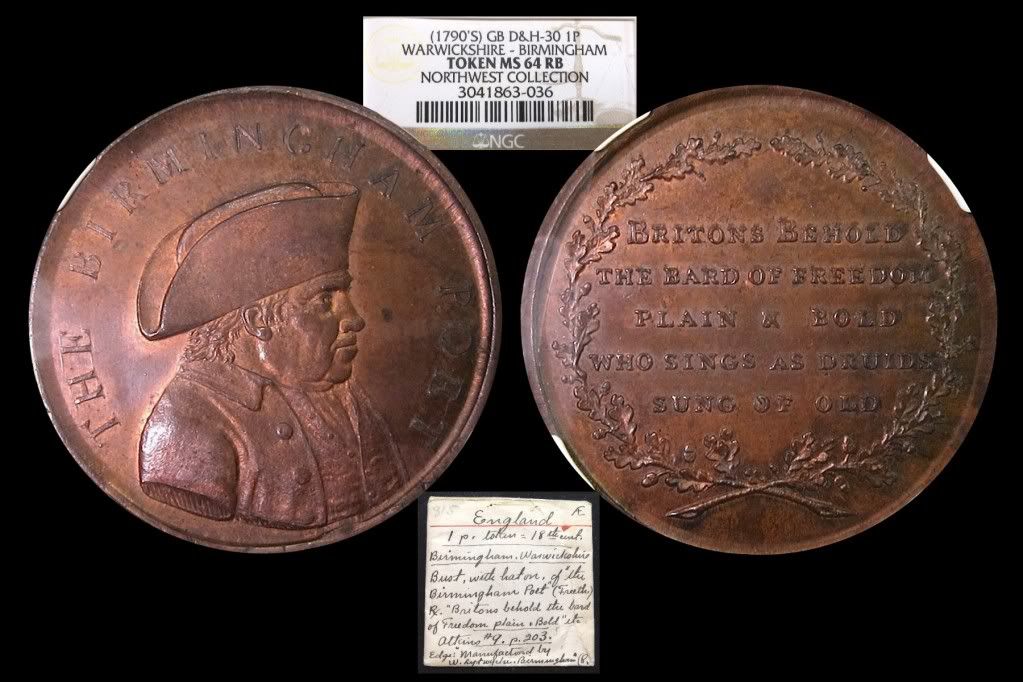


Stephanie, Ok, I'll bite! Who's the Northwest Collection?
-
-
I'm a sucker for a Conder token that's "hammered"!

-
Classic piece!
Do you know the pedigree given the envelopes?
-
Nothing too fancy for the Falmouth Independent Volunteers.

-
I confess I had to dig out D&H to discover there was a Roxburghshire with its lone token. Between you and Dr. Sriro, you've got most of 'em!
So how many counties does this make?




Conder Collectors - Post Your Images
in US, World, and Ancient Coins
Posted
Some of the auction houses have run amok with axial or other photographic techniques that can obscure what a token actually looks like.
(With very colorful or reflective pieces, I'd concede that any single image can't do the job very well, but this is my rant.)
Here's DNW's take on Warwickshire 41 (Brown III) which I view as pretty much a caricature of the token. My head-on images follow.
I'm glad I bid on this piece, but really had no idea what it actually looked like until I opened the package.